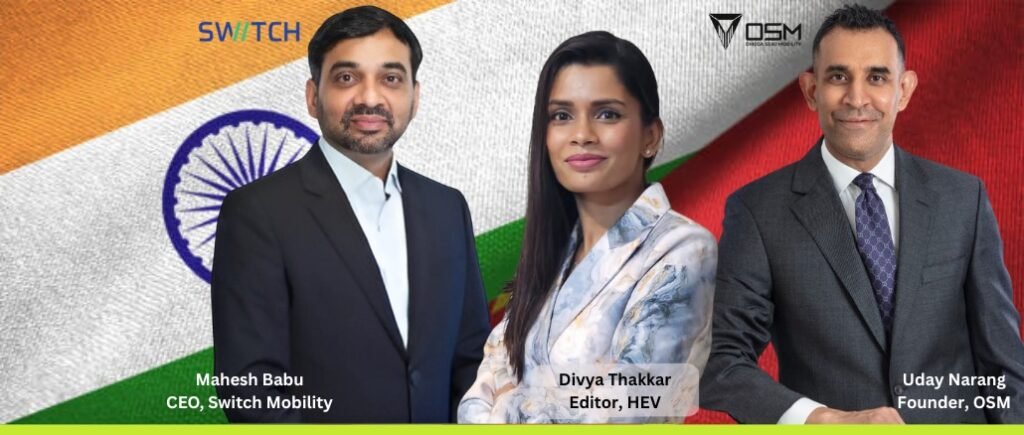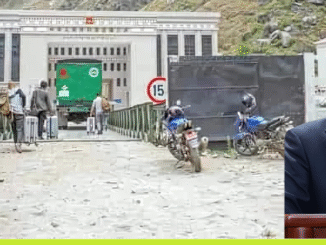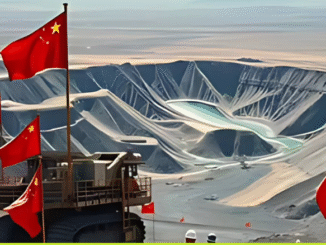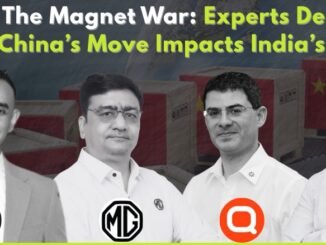
The rare earth magnet crisis is not just a supply chain hiccup—it’s a global wake-up call. With China controlling over 90% of the world’s rare earth magnet processing, and more than 30 critical Indian shipments currently stuck, the electric vehicle sector is under pressure like never before. But in the midst of uncertainty, two of India’s most dynamic EV leaders—Mahesh Babu of Switch Mobility and Uday Narang of Omega Seiki—are mapping out a bold, actionable roadmap for the future.
Mapping the Challenge: What’s at Stake for India and the World?
“This is a global issue, not just faced by India but by all the other economies in the world,” Mahesh Babu begins, his tone measured but urgent. “The industry is staring at a real challenge with the supply of rare earth minerals, which are absolutely critical for electric buses and trucks. We have limited inventory, and with China holding a dominant position, we cannot afford to be caught unprepared.”
Uday Narang, ever the disruptor, adds a note of optimism: “You know, I completely agree with Mahesh’s point. The crisis is real, but it’s also an opportunity. India’s journey to self-reliance and the success of the EV industry is not a sprint, it’s a marathon. We have to be patient, persistent, and ready to pivot.”

The Three-Pronged Strategy: Short, Medium, and Long-Term Moves
Short Term:
“In the immediate future, the focus has to be on identifying and securing alternative sources for these minerals—countries like Vietnam or the United States, where there are existing or emerging capacities for rare earth supply. We need to act quickly, but also carefully, to ensure quality and reliability.”
Medium Term:
“At the same time, we have to maintain and strengthen our existing relationships with China. This is not about depending on China, but about managing the transition while we build our own capabilities. Actually, this kind of coordination is essential for the industry as a whole. We need to work together—manufacturers, suppliers, and policymakers—to navigate this period of uncertainty.”
Long Term:
“The real solution is to make India self-reliant in rare earth minerals. This means investing in research and development, building our own processing and manufacturing facilities, and creating a robust domestic supply chain. It’s not something that will happen overnight. It requires patient capital, strategic planning, and a coordinated effort across the entire ecosystem—public sector, private sector, and academia.”
He adds, “While China has taken the number one position in rare earth minerals and electric vehicle supply, the number two position is still open. India has enough potential to tap into it, both in electric vehicles and rare earth mining. We have the talent, the resources, and the vision to make this happen. It’s about making the right moves at the right time, and staying committed to our long-term goals.”
Collaboration, R&D, and the Power of Partnership
Both leaders agree: tackling this challenge is a team effort.
“The government cannot be expected to fund everything,” Mr Mahesh explains. “They’ve already done a great deal in terms of policy support and incentives, including PLI schemes. However, when it comes to R&D for rare earth minerals, the private sector’s agility, investment, and innovation are critical. Actually, this is where true collaboration comes into play—government, industry, and academia working together to build a robust innovation ecosystem.”
Mr. Narang, with his trademark energy, adds: “I think the government has shown us the way with Prime Minister Modi’s vigilant approach to Atmanirbhar Bharat. Now it’s time for private sector players like us to step up and match that commitment. Rome was not built in a day, whereas in India people aspire to build Rome every day. This R&D transformation needs to be continuous, rigorous, and well-planned—where both sectors move in sync. It’s not a village, it’s a whole ecosystem. For this to be a success, every part has to move together.”
Alternative Technologies: The Innovation Edge
The conversation shifts to alternative motor technologies—induction and switched reluctance motors—that could reduce India’s dependence on rare earths.
Mr Mahesh is pragmatic: “Motors that don’t rely on permanent magnets often need to be significantly larger to deliver the same performance. This can be a challenge, especially for larger vehicles like buses and trucks, where space and weight are critical. But it’s not just about the size of the motors—rare earth magnets are used across a wide range of automotive applications. The most sustainable approach is to use a mix of technologies—where possible, adopt alternative motors, but in cases where performance and space requirements make this impractical, we’ll still need to use permanent magnets.”
Mr. Narang, ever the optimist, sees opportunity: “At Omega Seiki, we’re already experimenting with alternative motor technologies through our partnerships with Japanese and Korean companies. The beauty of being an entrepreneur is that you can pivot quickly when you see opportunities. While legacy players might find it challenging to retool their entire production lines, startups like us can integrate these technologies from day one.”
Partnerships and the Ecosystem: Legacy Meets Startup
Supporting startups in rare earth refining is a key theme.
“At Switch Mobility, our approach is not to partner directly with these startups,” Mr. Mahesh explains. “Instead, our partners—such as component suppliers—source materials from them. This allows us to maintain quality and reliability while supporting the growth of new players in the ecosystem. That said, I strongly believe that these startups need support from established industry players to succeed. Legacy brands have a role to play in mentoring, guiding, and sometimes even investing in these new ventures.”
Mr. Uday Narang expands on the ecosystem approach: “It’s not a village, it’s a whole ecosystem. For this to be a success, every part has to move in sync with each other. At Omega Seiki, we’ve done exactly this with our French partners in hydrogen technology—shared ownership ensures complete alignment. This ecosystem approach is exactly what Prime Minister Modi’s Atmanirbhar Bharat vision represents.”
Recycling Rare Earth: The Circular Economy Challenge
Both leaders are realistic about the potential of recycling.
“Recycling is important and should be pursued, but it will never be enough on its own to meet the requirements of the industry,” Mr. Mahesh says. “If you look at the lifecycle of rare earth magnets, you’ll see that they are used in products with long lifespans—often 10, 15, or even 20 years. This means that the recycling stream will always be fragmented and relatively small compared to the overall demand for these materials.”
Mr. Narang adds: “Urban mining from e-waste is not a pipe dream—it’s the future. The reason startups are perfectly positioned to pioneer this is our ability to move fast and take risks that legacy players cannot. But this requires an ecosystem approach—it’s not a village, it’s a whole ecosystem. For this to be a success, every part has to move in sync with each other.”
Turning Crisis into Leadership
The crisis has exposed vulnerabilities, but also opportunities.
“This crisis could absolutely become the catalyst for global leadership if we act with the urgency and vision it demands,” Narang declares. “As a disruptor who dreams big, I believe the single policy overhaul that would dismantle China’s monopoly is mandatory integration of rare earth recycling in all EV manufacturing. The reason this would work is that it creates an ecosystem where every part moves in sync with each other.”
Mr Mahesh is equally ambitious: “By taking a holistic approach, we can create a more resilient and sustainable mobility ecosystem. This is how we will ensure that India’s electric mobility sector remains resilient and continues to grow, no matter what challenges we face.”
The Last Word
As Mahesh Babu and Uday Narang make clear, India’s journey to self-reliance in rare earth magnets and electric mobility is a marathon, not a sprint. It demands patience, partnership, and a relentless commitment to innovation.
With leaders like Babu and Narang at the helm—one with the legacy perspective, the other with the disruptor’s edge—India is well positioned to turn this crisis into a defining moment. The roadmap is clear: collaborate, innovate, and build an ecosystem where every player moves in sync.
This is how India will outmaneuver the rare earth magnet crisis—and lead the world in sustainable mobility.






